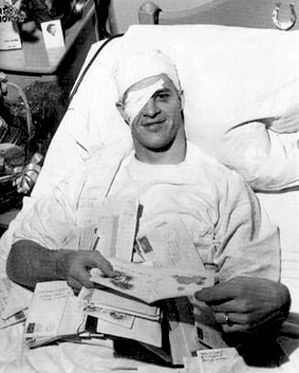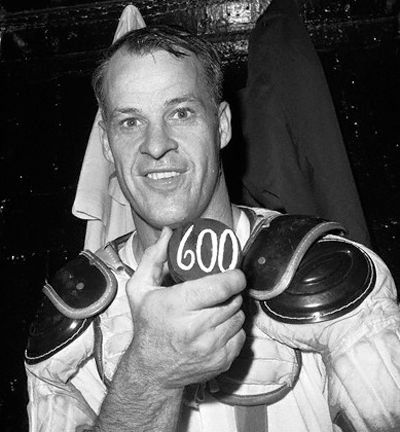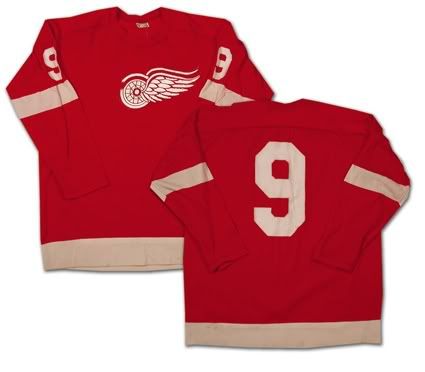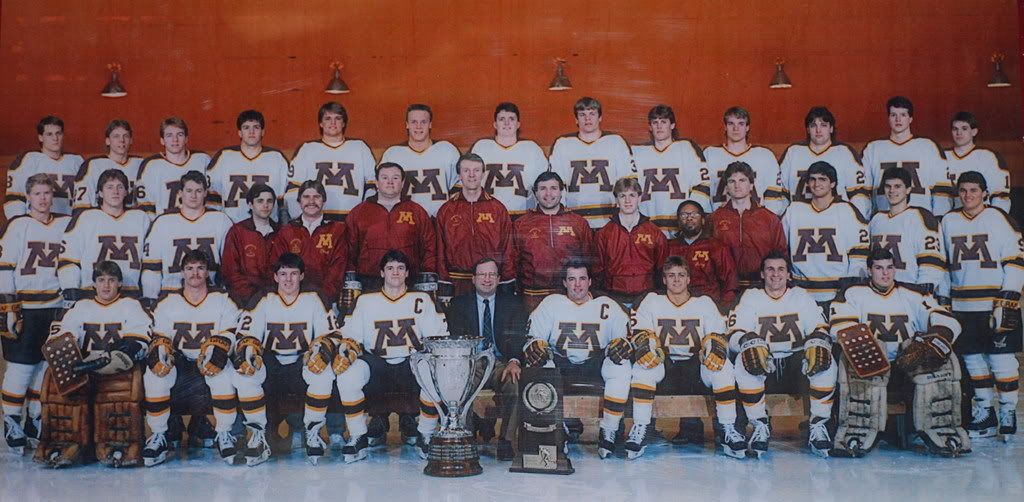Born on this date in 1967 in Duluth, Minnesota, goaltender Robb Stauber would become the first goaltender to win the Hobey Baker Award as the outstanding player in US College Hockey in the eighth season of the award.
After being named an All-State Goalkeeper at Duluth Denfeld High School, Stauber would attend the University of Minnesota beginning in 1986. He would appear in 20 games and finish with a 13-5 record while splitting time with future Boston Bruins goalie John Blue. The Gophers would finish third in the nation that season after making it to the NCAA Final Four. Stauber would record his first point that season after being credited with an assist. During the season he would also play for the United States in the World Junior Tournament.
Stauber's second season with the Golden Gophers in 1987-88 would see him set a team record with 44 games played, posting a 34-10 record and lowering his goals against average from 3.53 down to 2.72 and help the team capture the WCHA Championship.
The Gophers would make another trip to the Final Four before losing to St. Lawrence 3-2 on a goal in the final minute of the game. Never one to sit back and watch the play develop, Stauber was always on the lookout to fire a long pass to send one of his potent forwards back up the ice in the other direction, and collected five assists as a result. At the end of the season he would be named the winner of the John Mariucci Award as the Gophers's Most Valuable Player, be named WCHA Goaltender of the Year, earn All-WCHA First Team honors, be named to the All-America first team, earning a coveted spot on one of the Mariucci Arena murals, reserved for Gopher First Team All-Americans, and become the first goaltender to win the Hobey Baker Award.

1988-89 would see the Gophers capture back to back WCHA Championships and Stauber would see action in 34 games, post a 26-8 record and lower his goals against average yet again to 2.43. His assist total would climb to seven, despite playing ten fewer games than the previous season. Stauber and the Gophers would make it all the way to the NCAA Championship game only to lose to Harvard 4-3 in overtime in one of the greatest college hockey games of all time. Stauber would be named the WCHA Goaltender of the Year for the second season in a row and be named one of the ten finalists for the Hobey Baker Award.
His final college career stats shows a 2.77 goals against average and a 73-23 record and he was recently named one of the Top 50 Players in WCHA History. Without question, Stauber was a supremely talented goaltender which gave him the confidence to often leave his crease to challenge shooters or corral the puck before attempting another of his home run passes to his forwards up the ice. In fact, he would even score a goal while playing in the minors later in his career.
Following his collegiate career, Stauber would make another appearance for the United States, this time at the 1989 World Championships in Stockholm, Sweden.
The next season, 1989-90, he would make his NHL debut for the Los Angeles Kings, seeing action in a pair of games as a teammate to Wayne Gretzky. He would spend the next two seasons in the minors and return to the NHL full time in the 1992-93 season, in which the Kings would make it all the way to the Stanley Cup Finals with Stauber seeing action in four games verus the Calgary Flames in the opening round.
Stauber guarding the Kings net during the 1992-93 season
After one more season in Los Angeles where Stauber would play in 22 regular season games, including wearing the first decorated goalie pads in NHL history.
Stauber during the 1993-94 season (above) wearing
the first decorated goalie pads in NHL history (below)
Stauber was traded to the Buffalo Sabres during the 1994-95 season, seeing six games of action.
He would spend the next three seasons back in the AHL with Rochester, where he once scored a goal, Portland and Hartford.
His final NHL totals are 62 games played with 21 wins, 23 losses and 9 ties, 1 shutout and a 3.80 goals against average along with 4 playoff games and a 3-1 record.
Since retiring as a player, Stauber has opened Stauber's Goalcrease Academy to train goalkeepers, written a book about, what else, goaltending, and has been the goaltenders coach for the University of Minnesota.
Today's featured jersey is a 1987-88 University of Minnesota Robb Stauber jersey as worn during his career at the University of Minnesota, including his Hobey Baker winning season and was lettered by our friends at VintageMinnesotaHockey.com.
This jersey with it's classic hockey styling was first used by Minnesota in 1985-86 and the gold trim was added to the shoulder yoke after just one season. Today's featured jersey can be dated to precisely 1987-88 by the presence of the shoulder trim but the lack of a WCHA patch, which arrived in 1988-89 in gold. The WCHA patch changed to a more contrasting maroon color after one season and this style remained in use through 1992-93, the final season of the old Mariucci Arena. The only other variation of the jersey was in 1990-91 when a USA flag patch was worn (only on the home jerseys) following a wave a patriotism following the outbreak of the first Gulf War in August of 1990.
It's a true disappointment that Stauber's college career took place prior to the age of youtube, since he was simply the most spectacular, dynamic and aggressive goaltender we have ever had the privilege of watching play live. Luckily, we did find these highlights of a vintage Gopher playoff game that contains some classic rare footage showing Stauber playing with reckless abandon early in the video from 1988 in the original Mariucci Arena. Hopefully this will give you some hint of what kind of an amazing video a true compilation of Stauber's best saves and most daring challenges would have looked like.
"SAVE BY STAUBER!!"













